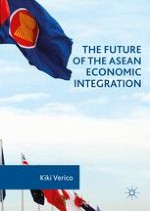2017 | OriginalPaper | Buchkapitel
5. The ASEAN Economic Community of 2015 and Beyond
verfasst von : Kiki Verico
Erschienen in: The Future of the ASEAN Economic Integration
Verlag: Palgrave Macmillan UK
Aktivieren Sie unsere intelligente Suche, um passende Fachinhalte oder Patente zu finden.
Wählen Sie Textabschnitte aus um mit Künstlicher Intelligenz passenden Patente zu finden. powered by
Markieren Sie Textabschnitte, um KI-gestützt weitere passende Inhalte zu finden. powered by
